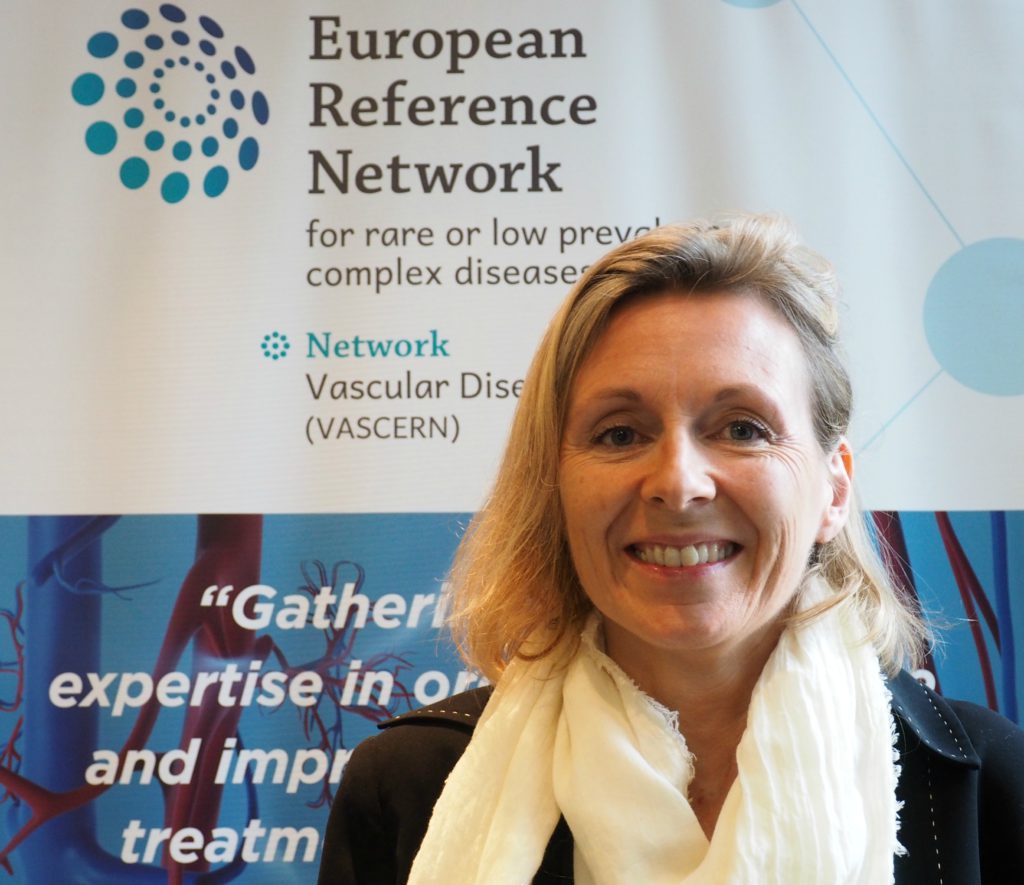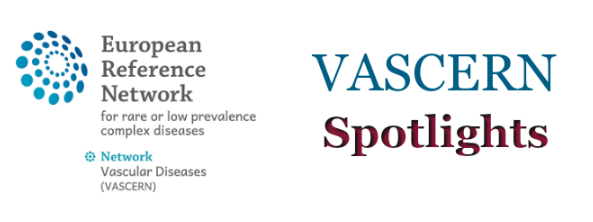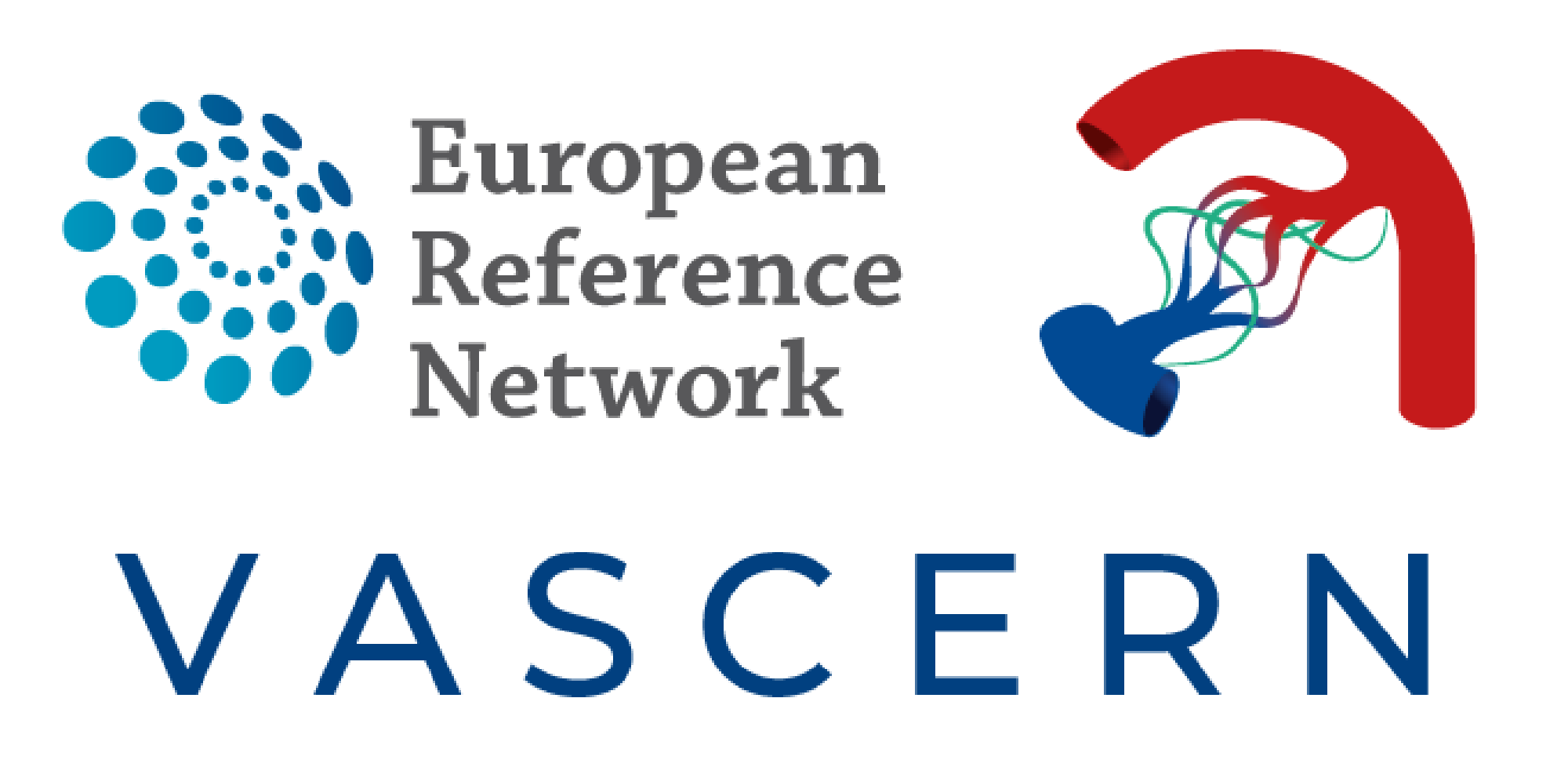

This month we have the pleasure to interview Dr. Sophie Dupuis-Girod from Lyon, France. Dr Dupuis-Girod is Co-Chair of the Hereditary Haemorrhagic Telangiectasia (HHT) Working Group and talks about how she became interested in this rare vascular disease, her involvement in VASCERN and what she believes are the greatest achievements of VASCERN to date.
1. What disease(s) do you specialize in (or what is your medical specialty) and what interested you in this field?
I specialize in rare vascular diseases, with a particular
focus on Hereditary Haemorrhagic Telangiectasia (HHT), also known as Rendu-Osler
disease. I am a doctor since 1995, a pediatrician since 1997, and I am a
clinical geneticist since 2006.
My special interest in rare vascular diseases began in 2005 when I met Professor Henri Plauchu during the Cure HHT International Congress which was held in Lyon, France. Prof Plauchu had been working with patients with HHT for more than 20 years after finding a high concentration of patients with this disease in the Valserine Valley located in the Jura region of France. He completed his doctoral thesis on this cohort of patients with HHT and was later involved in discovering one of the genes involved in the etiology of HHT. It was for this reason that he set up a specialized center for HHT at the Hospices Civils de Lyon and I inherited and have continued his revolutionary work on HHT. In France in 2004, the French Government announced the creation of a National Plan for Rare Diseases which led to the designation of certain centers as reference or competence centers for rare diseases. Our center at Hospices Civils de Lyon was designated as a Reference center for HHT (Centre de Reference Maladie Rares – Maladie de Rendu-Osler) and 2 centers of competence for Marfan syndrome and for other rare vascular diseases.
In parallel I have a doctorate degree in clinical research that I attained in 2010. I have previously conducted research in the molecular genetic laboratories of both the Gustave Roussy Institute in Paris (France) and at the MD Anderson Cancer Center in Houston (USA) and am currently affiliated with Dr. Sabine Bailly’s laboratory located at CEA Grenoble where research on angiogenesis (physiological process of new blood vessel formation) is underway. It is very important for me to be involved in the clinical research on rare vascular diseases as we are now able to benefit from the development of anti-angiogenic drugs (agents used for cancer treatment that block the growth of blood vessels) as possible treatments for HHT.
My greatest hope for VASCERN is that we will be able to find a way to run large multinational clinical trials together so that we can advance in our common aim of finding new treatments for HHT and other rare vascular diseases.
2. How did you become involved in VASCERN?
The participation of our center in VASCERN happened quite naturally as we were already involved in an international network of HHT specialists with Cure HHT and the French National Network of Rare Vascular Diseases (FAVA-Multi), that is coordinated by VASCERN’s coordinator Professor Guillaume Jondeau. Because of our involvement in these two networks we were obviously informed of the call for the European Reference Networks (ERNs) and immediately replied to the call, knowing very well the importance of the ERNs for rare disease patients in Europe.
3. What is your greatest hope for VASCERN?
I think that the great work dynamic that we have created together (that existed between many of my HHT colleagues already) has only continued to multiply, as the network gives us more opportunities for interactions and for discussions. This has led to an increase in the production of informational documents on HHT (such as HHT’s Do’s and Don’ts factsheets, Pills of Knowledge (PoK) videos, outcome measures etc.) and I can only believe that this will lead to more support/funding for clinical research in rare vascular diseases. My greatest hope for VASCERN is that we will be able to find a way to run large multinational clinical trials together so that we can advance in our common aim of finding new treatments for HHT and other rare vascular diseases.
4. What challenges do you face as a healthcare professional in the rare disease field?
The main challenges faced in the rare disease field are trying to fill knowledge gaps in addition to the lack of funding made available for research for these diseases, due to their rarity. Training of doctors and providing important information on rare diseases is critical as we need more healthcare professionals to be able to recognize and manage them. We have published many documents in the HHT WG of VASCERN but again, publishing in scientific journals on the topic of rare diseases is often a challenge. The lack of funding allocated to rare disease research also needs to be addressed and can make conducting trials and research projects on new treatments for rare disease patients a challenge.
5. What have you accomplished in your medical career that you are most proud of?
I am very proud that at my centre we have been able to conduct many clinical trials that have tested new anti-angiogenic drugs as possible treatments for HHT and that some drugs have proven to be successful in improving the quality of life of many HHT patients. We published the results of one of these studies in 2012 in the Journal of the American Medical Association (JAMA) and we have had patients telling us how their condition has improved with these new treatments. That is the greatest accomplishment for me.
We need to find a way to increase the availability of grants and funding for the ERNs, in order to fund our future projects and to ensure the sustainability of these invaluable networks.
6. Are you currently involved in any research projects or clinical trials? If so can you please describe them briefly?
We are very active at Hospices Civils de Lyon when it comes to research and since 2005 we have implemented 7 clinical trials, including the TACRO (testing the efficacy and tolerance of the immunosuppressor tacrolimus as a nasal ointment for the treatment of epistaxis (nose bleeds) in HHT) and BABH (testing the efficacy and tolerance of the monoclonal antibody bevacizumab for the treatment of severe bleeding in patients with HHT) trials. The next upcoming clinical trial that we will start in September 2019 is the EPICURE trial, which will involve the testing of a new oral anti-angiogenic drug called nintedanib on HHT patients in order to test the efficacy of this agent for the treatment of epistaxis in HHT patients. We also have an upcoming European clinical trial in the works with Prof. Hans-Jurgen Mager (HHT-WG member) from the Netherlands. We equally have many research projects underway including one evaluating the quality of life of HHT patients with our psychologist, another on the use of low-dose X-rays. Finally, I have many fundamental research projects underway with Dr. Sabine Bailly at Grenoble on angiogenesis and I conduct research with Sophie Giraud on the search for modifier genes associated with HHT.
7. What VASCERN activities do you participate in and which are your favorite?
I am Co-Chair of the HHT WG, which is chaired by Prof. Claire Shovlin who I think has done a remarkable job as Chair with her positive energy and her dynamic leadership. I think my favourite part of VASCERN is the HHT WG meetings where we meet either face to face or virtually (during the monthly videoconference calls) as it is here where we really advance on our various projects. While our virtual HHT meetings are monthly, I am in constant contact with Prof. Shovlin and Prof. Elisabetta Buscarini (Deputy Co-Chair of HHT-WG) in order to monitor the progress of the various ongoing projects. We are lucky to have very enriching discussions with the members of our group and they lead to the production of our outputs.
8. What are the main achievements of VASCERN to date? What challenges does VASCERN still face?
I think that all of the documents produced (including the Patient pathways, Do’s and Don’ts factsheets, and Pills of Knowledge videos) are the main achievements of VASCERN to date as they allow both patients and healthcare professionals to have access to the important medical information that is not readily available elsewhere and that is so important when it comes to rare diseases.
The main challenge, in my opinion, is finding additional funding for the ERNs as the healthcare professionals and patient advocates are working on a voluntary basis and it is a lot of additional work for people with already very busy schedules. We need to find a way to increase the availability of grants and funding for the ERNs, in order to fund our future projects and to ensure the sustainability of these invaluable networks.


